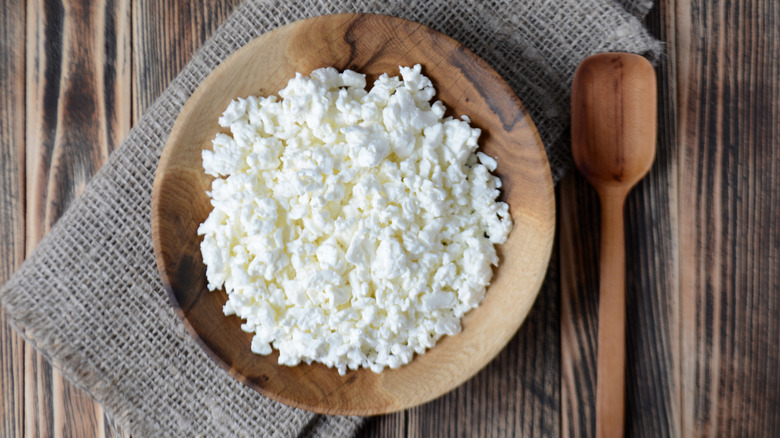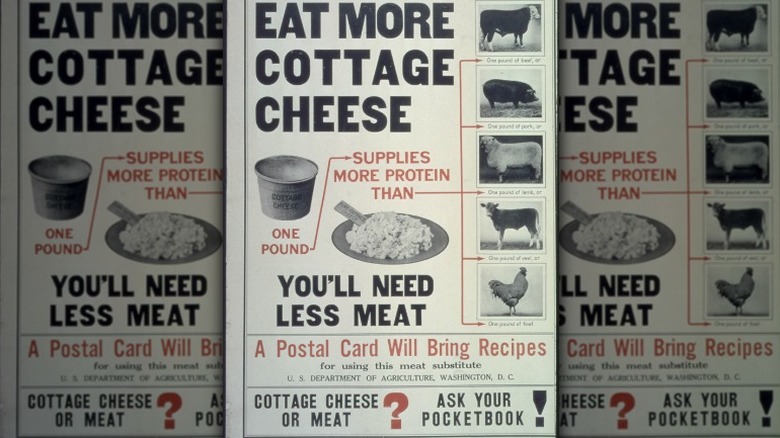The Story Of How Cottage Cheese Got Its Name Is Probably What You'd Expect
Cottage cheese is having a renaissance moment. With lumps of curds in a creamy base, this dairy product was a mid-century staple that nearly faded into the avocado-colored kitchen backdrop. Still, the protein-packed product has become popular again, and why not? It's nutritious with a nearly neutral creamy flavor that makes it an easy swap for fattier options. Interestingly, this is not the first revival for cottage cheese, which was one of the foods early American homesteaders made with excess milk. The curdled milk product was easy to make at home in the days when a farmer's small home was known as a cottage. Cheese made at the cottage is what we know as cottage cheese.
In the days before pasteurization, milk that was not kept very cold would quickly sour because naturally occurring bacteria produce lactic acid, similar to the way yogurt becomes tangy and sour as it gets made. Milk proteins begin to clump together into curds in the presence of acid, meaning this souring milk would curdle. The watery whey was strained off, leaving a mass of soft, lumpy cheese. This natural process could be followed in any farmstead cottage with excess milk.
Cheesemaking left the cottage to become big business
In the early 20th century, milk and cheese processing left the farm and moved to larger production factories where consistent techniques made products like cottage cheese less dependent on the whims of natural fermentation. Cottage cheese got its first brush with popularity in the early years of World War 1 when shifting protein-eating habits became a national priority in order to ensure soldiers were well-fed. Creameries were instructed to increase production of protein-rich products to feed Americans at home, while meat supplies were directed to military use.
So, while cottage cheese is no longer solely made in bucolic cottages by hard-working farm families, the name still reflects its humble origins. Eventually cottage cheese earned a reputation with dieters for being a relatively low-calorie, high-protein addition to any meal, be it a breakfast bowl with fruit or a salad plate for lunch. The revival today is based on those same merits, with an emphasis on quality protein. There are dozens of ways to use cottage cheese — from replacing higher-fat ricotta or cream cheeses in recipes to blending it into a smoothie or milkshake to increase the protein content. Simple cottage cheese is one of the historical links to foodways of the past that still nourish us.

